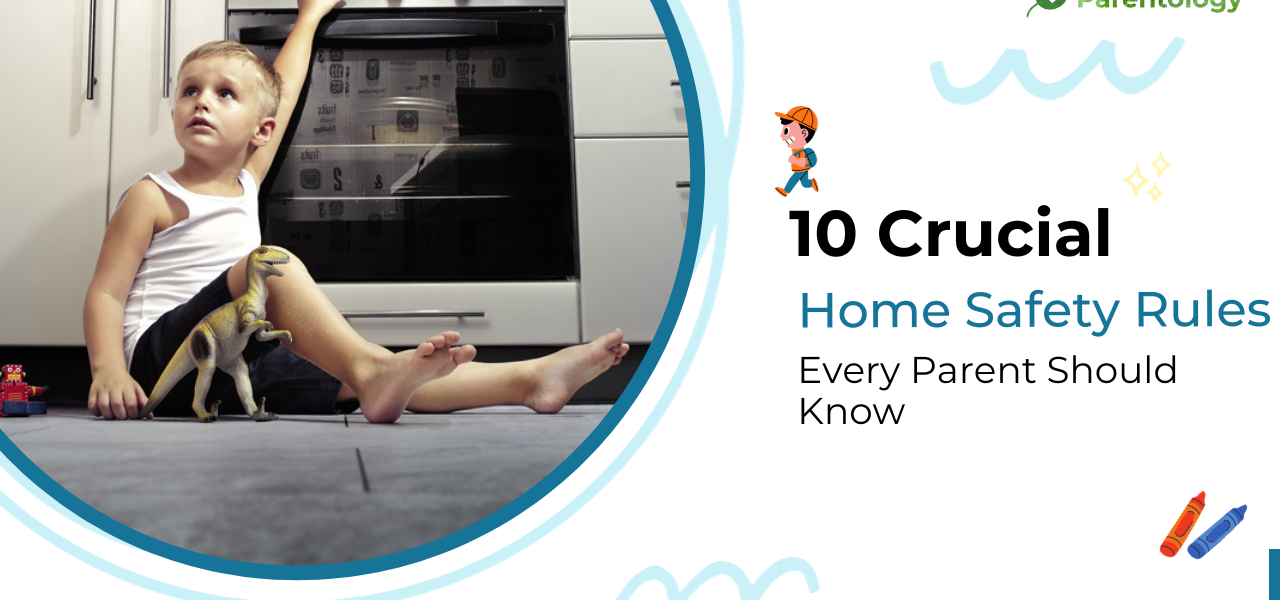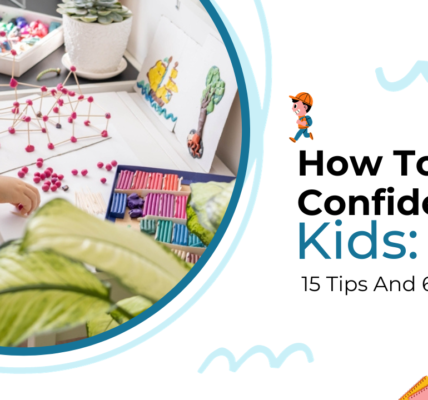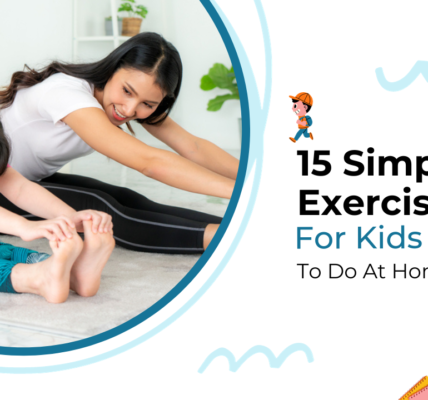10 Crucial Home Safety Rules Every Parent Should Know
Ensuring a safe and secure environment for kids within the home is paramount for every parent. Understanding and implementing essential safety rules can significantly reduce risks and prevent accidents. Here are ten crucial home safety for kids rules to fortify your child’s safety:
1. Supervision Is Key
Rule for Active Supervision:
- Description: Always ensure a responsible adult supervises young children, especially around potential hazards like swimming pools, kitchens, or stairs.
- Importance: Active supervision minimizes the risk of accidents and allows swift intervention if needed.
2. Secure Furniture and Appliances
Anchoring and Securing Hazards:
- Description: Use furniture straps or anchors to secure heavy furniture and appliances to prevent tipping over.
- Importance: Securing items prevents potential injuries caused by tipping or falling objects.
3. Childproofing Electrical Outlets and Cords
Safety Measures for Electrical Hazards:
- Description: Install outlet covers and use cord organizers to keep electrical cords out of reach.
- Importance: Protecting children from electrical hazards reduces the risk of shocks or burns.
4. Educate Kids on Emergency Protocols
Teaching Emergency Procedures:
- Description: Educate children on emergency procedures, including calling 911 or contacting trusted adults in case of emergencies.
- Importance: Preparedness empowers children to act responsibly in emergency situations.
5. Safe Storage for Harmful Items
Securing Hazardous Substances:
- Description: Store cleaning products, medicines, and toxic substances in locked cabinets or high shelves out of children’s reach.
- Importance: Prevent accidental poisoning by ensuring hazardous items are inaccessible to kids.
6. Fire Safety Measures
Fire Prevention and Preparedness:
- Description: Install smoke detectors, practice fire drills, and have a family fire escape plan in place.
- Importance: Fire safety measures are crucial in averting and managing fire-related emergencies.
7. Safe Handling of Sharp Objects
Managing Cutlery and Sharp Tools:
- Description: Store sharp objects like knives, scissors, or tools securely and out of children’s reach.
- Importance: Reducing access to sharp objects minimizes the risk of accidental cuts or injuries.
8. Setting Boundaries Around Water
Water Safety Protocols:
- Description: Establish strict rules around water safety, supervise baths and pools, and ensure swimming lessons for kids.
- Importance: Preventing water-related accidents is vital to children’s safety.
9. Practicing Safe Internet Usage
Guidelines for Online Safety:
- Description: Set boundaries on internet usage, install parental controls, and educate kids on safe online behavior.
- Importance: Ensuring safe internet practices protects children from online risks and inappropriate content.
10. First Aid and Emergency Kit Accessibility
Preparedness with Medical Supplies:
- Description: Maintain a well-equipped first aid kit and keep emergency contact information handy.
- Importance: Quick access to medical supplies aids in immediate response to minor injuries or emergencies.
Importance of Supervision in Various Settings
Supervision Beyond Home Spaces:
- Outdoor Vigilance: Extend active supervision to outdoor areas, including playgrounds, parks, or driveways, to ensure children’s safety from potential hazards like traffic or strangers.
- Visiting Others’ Homes: Encourage open communication with caretakers or relatives regarding home safety measures, ensuring a safe environment for children in other households.
Securing Furniture and Appliances: Additional Considerations
Childproofing Techniques:
- Secure TV Mounts: Mount televisions to the wall or use anti-tip brackets to prevent toppling accidents.
- Anchoring Tall Furniture: Bookcases, dressers, and wardrobes should be anchored securely to avoid tipping over.
Electrical Safety Measures: Minimizing Risks Further
Advanced Precautionary Steps:
- Tamper-Resistant Outlets: Install tamper-resistant outlets that require equal pressure on both prongs to ensure children cannot insert objects.
- Cord Management: Use cord concealers or wind cords to keep them out of sight and reach, reducing entanglement risks.
Educating Kids on Emergency Protocols: Real-Life Scenarios
Scenario-Based Training:
- Fire Drills: Practice escape plans from different areas of the home, simulating scenarios like blocked exits or smoke-filled rooms.
- Medical Emergency Role-Play: Teach children how to communicate their address and basic medical information during emergencies.
Safe Storage: Expanding on Hazardous Items
Beyond Household Cleaners:
- Plants and Household Items: Identify and keep potentially toxic plants or substances out of children’s reach, including certain indoor plants or substances like alcohol-based products.
Water Safety: Ensuring Comprehensive Protection
Supervision and Pool Safety:
- Fencing and Alarms: Install pool safety barriers, alarms, or covers to prevent unsupervised access to pools or spas, especially for toddlers.
- Swimming Lessons: Enroll children in age-appropriate swimming lessons taught by certified instructors to impart water safety skills.
Internet Safety: Strengthening Awareness
Encouraging Safe Online Behavior:
- Parental Controls: Utilize parental control settings on devices to limit access to inappropriate content and monitor online activities.
- Online Boundaries: Establish clear rules on the kind of information children can share online and whom they can interact with.
Revisiting First Aid and Emergency Preparedness
Regular Kit Maintenance:
- Inventory Check: Regularly assess and restock the first aid kit to ensure availability of supplies such as bandages, antiseptics, and emergency contact information.
- CPR Training: Consider taking CPR and first aid courses to be equipped with life-saving skills.
FAQs on Home Safety for Kids Continued
Q 1. At what age should kids start learning about home safety?
Ans 1: Children can begin learning about home safety as young as toddlers. As they grow, discussions about safety should evolve to match their understanding and abilities.
Q 2. How often should parents conduct home safety checks?
Ans 2: Regular safety checks should occur at least once every few months. It’s also recommended to reassess safety measures after significant changes in the household or as children grow.
Q 3. Are there any safety measures to prevent poisoning incidents?
Ans 3: Yes, securing household chemicals, medicines, and plants, along with educating children about harmful substances, significantly reduces the risk of poisoning incidents.
Q 4. What’s the best way to teach water safety to kids?
Ans 4: Enrolling children in swimming lessons from a young age, establishing strict rules around water activities, and ensuring supervision are effective ways to teach water safety.
Q 5. How can parents ensure kids adhere to internet safety rules?
Ans 5: Regular communication, setting guidelines, utilizing parental controls, and teaching kids about online risks help enforce internet safety rules effectively.
Q 6. How can parents ensure childproofing is effective?
Ans 6: Regularly evaluate childproofing measures, like door locks, cabinet latches, and safety gates, ensuring they remain intact and functional. Periodically reassess as children grow to address new risks.
Q 7. Are there specific safety measures for preventing falls?
Ans 7: Yes, install safety gates at staircases, use window guards or locks, and add cushioning to sharp corners and edges to prevent falls and potential injuries.
Q 8. What’s the best approach to teach fire safety to young children?
Ans 8: Use age-appropriate language and visuals to explain fire safety concepts. Conduct fire drills with specific instructions and practice escaping low to the ground in case of smoke.
Q 9. How can parents ensure safe handling of pets around children?
Ans 9: Supervise interactions between pets and kids, teach children to respect animals’ space, and educate them about pet behaviors to prevent potential accidents or injuries.
Q 10. How can parents reinforce the importance of safety rules without scaring children?
Ans 10: Frame discussions positively, emphasizing safety as a way to have fun and explore more securely. Use gentle reminders and positive reinforcement to encourage adherence to safety guidelines.
Conclusion: Ensuring a Safe Haven for Children
Ensuring home safety for kids is an ongoing process that demands attention, vigilance, and continuous education. These ten safety rules serve as a foundation to create a secure environment, enabling children to thrive and explore without unnecessary risks. By implementing and practicing these measures consistently, parents can significantly mitigate potential hazards and protect their children from harm within the home environment.
Parentology, with its extensive resources on child safety and parenting, provides additional guidance and expert advice on bolstering home safety for children. Visit Parentology to access further insights into safeguarding your child’s well-being.





